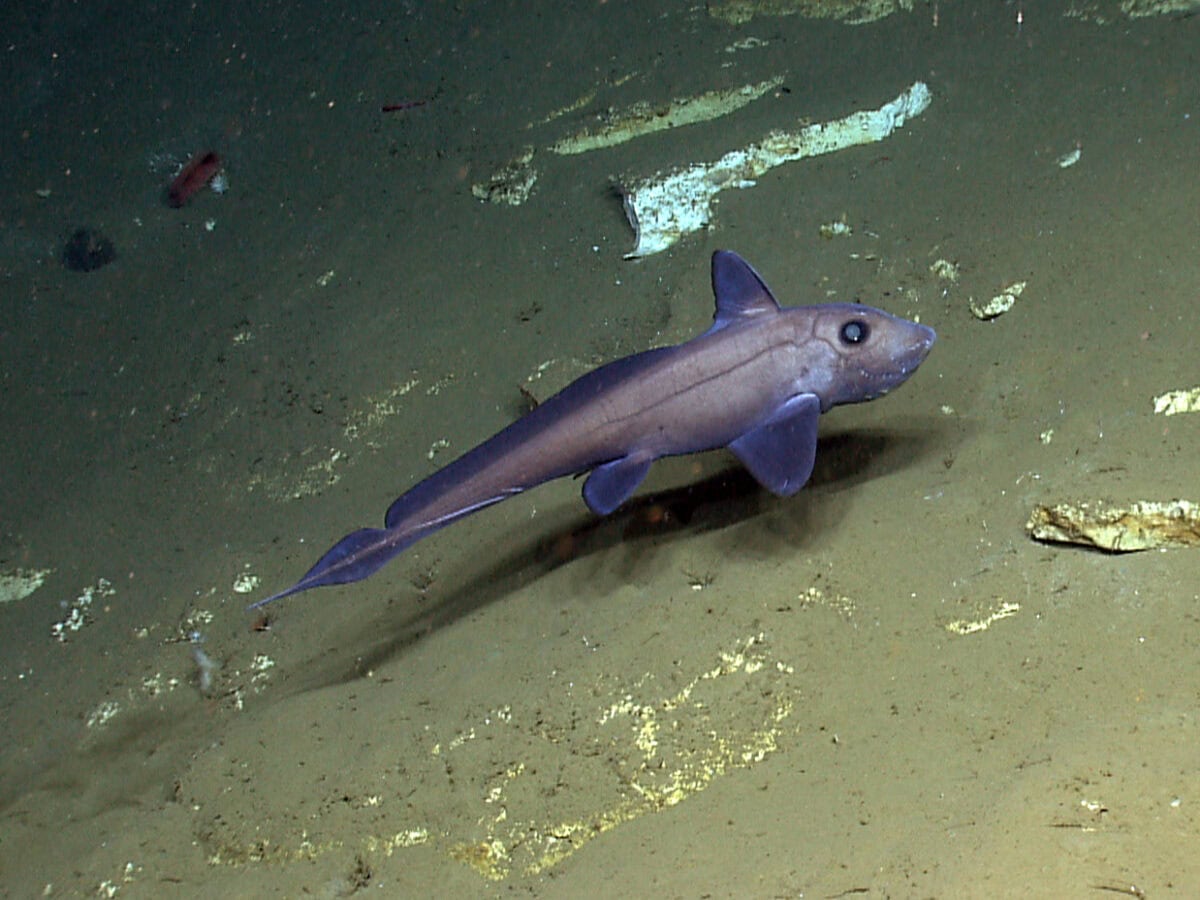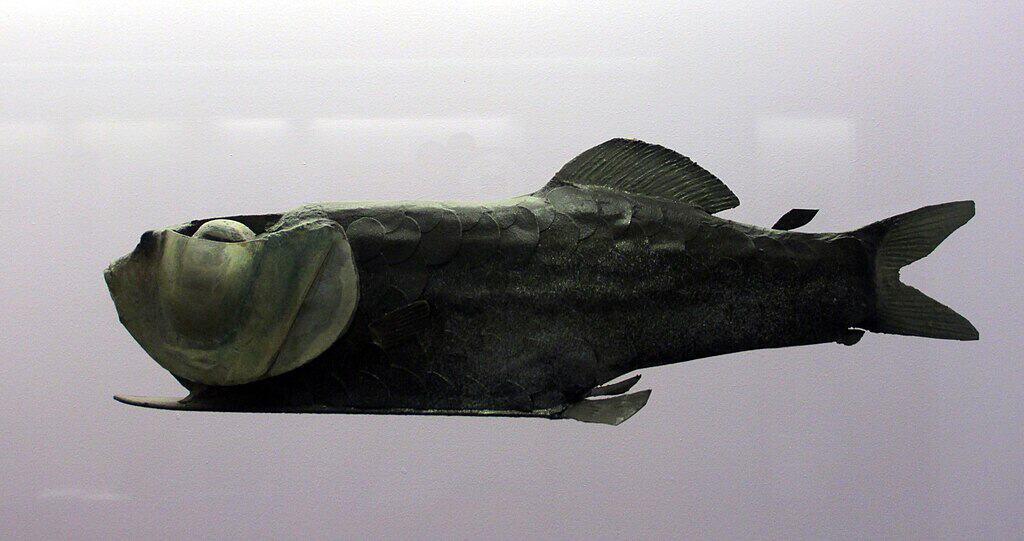Nestled along the northeastern edge of the United States, the coastline of Massachusetts hides an enigmatic world beneath its surface. This section of the Atlantic Ocean is home to a fascinating array of deep-sea creatures that remain largely unseen by the human eye. These mysterious beings not only ignite the curiosity of marine biologists but also captivate anyone intrigued by the secrets of the ocean depths. In this exploration, we dive into the dimly lit world of the most captivating deep-sea creatures found off the coast of Massachusetts.
Bioluminescent Lanternfish: Nature’s Sea Lanterns

Lanternfish, belonging to the family Myctophidae, are an essential component of the ocean’s mesopelagic zone. These small, glowing fish are equipped with photophores, specialized light-producing organs that enable bioluminescence. This natural glow not only serves as a defense mechanism against predators but also plays a crucial role in communication and navigation. Off the coast of Massachusetts, these fish form massive, shimmering schools that can number in the millions, creating an underwater spectacle akin to a cosmic dance in the deep, twilight zone of the ocean.
Chimaeras: The Ghostly Sharks

Also known as ghost sharks, chimaeras inhabit the deep waters off Massachusetts. These cartilaginous fish are related to sharks and rays, characterized by their elongated bodies and whip-like tails. Chimaeras possess a range of adaptations suited to life in the deep, including a lateral line system for detecting vibrations and specialized electroreceptors to sense the electric fields of prey. Their eerie appearance, coupled with their secretive lifestyle, makes them one of the most fascinating yet elusive creatures lurking in the ocean depths.
Deep-Sea Anglerfish: Masters of Disguise

Famous for their grotesque appearance and unique hunting strategy, deep-sea anglerfish are a classic example of adaptation to the deep-sea environment. Female anglerfish are equipped with a bioluminescent lure, an extension of their dorsal spine that they use to attract prey in the pitch-black waters. The mating process of anglerfish is equally intriguing, with males permanently attaching themselves to females, effectively becoming parasites. These adaptations highlight the incredible biological innovations present within the ocean depths.
Giant Squid: The Elusive Giants

Giant squids have long been the subjects of maritime lore, often regarded as mythical sea monsters. However, these colossal cephalopods are very real and occasionally spotted off the coast of Massachusetts. Growing up to 40 feet in length, their enormous eyes, the largest in the animal kingdom, allow them to detect light at great depths. Giant squids are formidable predators, and their existence within local waters continues to fuel both scientific inquiry and public imagination.
Vampire Squid: The Ocean’s Coagulated Nightcrawler

The vampire squid, named for its dark webbing between its tentacles, occupies the mesopelagic and bathypelagic zones. Unlike traditional squids, the vampire squid prefers to drift with the ocean currents, expending minimal energy in its deep-sea habitat. Equipped with light-producing photophores and a gelatinous body that reduces density, these creatures are adapted to survive the cold, oxygen-poor waters of the deep. Their unique adaptations allow them to thrive in one of the ocean’s most inhospitable environments.
Deep-Sea Octopuses: Masters of the Abyss

Several species of octopuses inhabit the deep waters off Massachusetts, each with specialized adaptations for life under pressure. Among these are the Dumbo octopus, named for its ear-like fins that enable a graceful, flying motion through the water. These octopuses exhibit a range of behavioral and physiological adaptations, including advanced vision and unique methods of locomotion, that allow them to navigate the challenges of the ocean floor.
Barreleye Fish: The See-Through Wonder

The barreleye fish is a peculiar deep-sea species characterized by its transparent head and tubular eyes. These eyes are capable of upward rotation, allowing the fish to spot potential prey or predators against the backdrop of faint sunlight filtering down from above. The fish’s sensory adaptations are vital for survival in its dimly lit environment, showcasing one of the many evolutionary marvels of the deep sea.
Sea Toads: The Bottom-Dwelling Oddities

Resembling their terrestrial namesakes, sea toads are a type of anglerfish that dwell along the seabed. Known for their awkward, lumpy bodies and the modified pectoral fins they use to “walk” along the ocean floor, sea toads are masters of camouflage. They blend seamlessly with the rocky substrate, utilizing stealth to ambush unsuspecting prey. Sea toads highlight the creative evolutionary strategies employed by marine life in the quest for survival.
Hadal Snailfish: Survivors of the Depths

Hadal snailfish are one of the deepest-dwelling fish species known, found at depths exceeding 8,000 meters. These fish have adapted to withstand tremendous pressures that would crush most life forms. They possess enzymes that stabilize cellular proteins and a flexible body structure that prevents structural damage under extreme conditions. The discovery of hadal snailfish emphasizes the resilience of life in some of the planet’s most extreme environments.
Six-Gill Sharks: Ancient Predators

With a lineage tracing back over 200 million years, six-gill sharks are among the most primitive of the modern shark species. These large, elusive sharks are equipped with six gill slits, unlike the five commonly found in other sharks, and inhabit deep oceanic waters. Their slow metabolism and sluggish demeanor are adaptations to the nutrient-scarce environment of the deep sea. Encountering a six-gill shark is akin to glimpsing into the distant past, a living reminder of the ocean’s ancient origins.
Glass Squid: Transparent Mariners

Members of the Cranchiidae family, the aptly named glass squid are characterized by their nearly transparent bodies, providing effective camouflage against predators. This transparency, combined with the ability to regulate buoyancy using an ammonia-filled chamber, allows them to hover effortlessly within the water column. Their unique adaptations are vital for evasion and survival, especially in the abundant predatory landscape of the ocean’s midwaters.
Yeti Crabs: The Furry Automation

Yeti crabs, named for their hairy limbs, were first discovered near hydrothermal vents and cold seeps. These crabs rely on bacteria growing on their “fur” for nutrients, which they harvest by waving their claws over vent emissions. Such symbiotic relationships illustrate the complex ecological interactions nurturing life in extreme environments. Yeti crabs epitomize the rich tapestry of life thriving under the challenges posed by the deep sea.
In conclusion, the deep waters off the Massachusetts coast offer a glimpse into one of our planet’s final frontiers. From bioluminescent fish and parasitic anglers to ancient predators and transparent mariners, the ocean depths present an unending source of wonder and discovery. These remarkable creatures not only broaden our understanding of the adaptations necessary for life at such depths but also fuel the imagination, inspiring further exploration into the enigmatic world that lies beneath the waves. Immersing ourselves in their mysteries encourages deeper appreciation and stewardship of our planet’s diverse marine ecosystems.
- Why Nurse Sharks Are Often Misunderstood - August 9, 2025
- 9 Most Venomous Spiders Lurking in US Homes - August 9, 2025
- How Scientists Tag and Track Sharks Off Florida’s Coast - August 9, 2025
